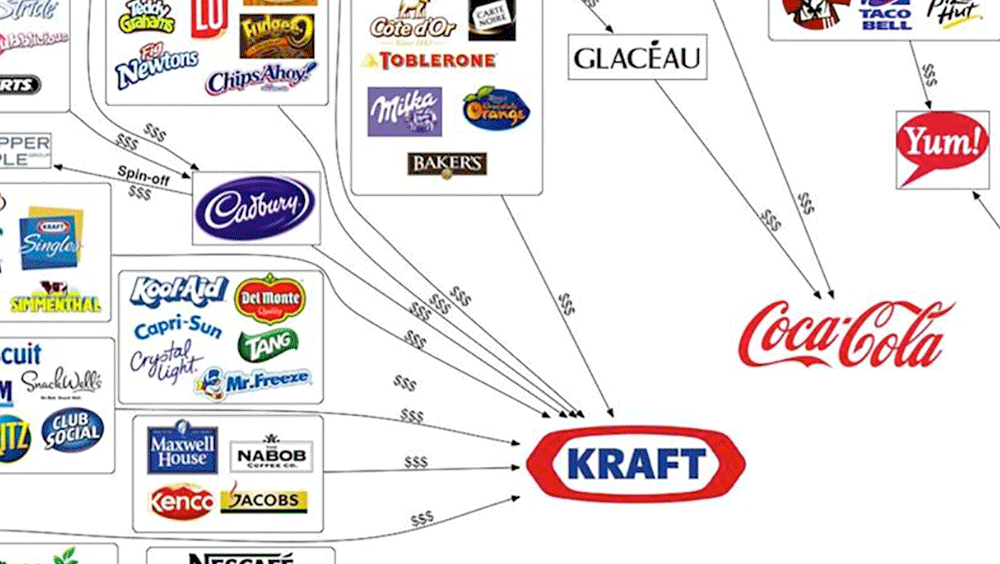Would it freak you out to know that 10 companies control almost everything you buy? It seems like these 10 companies — Kraft, Coca-Cola, Nestle, P&G, Johnson & Johnson, Unilever, Pepsico, General Mills, Kellogg’s, and Mars — are involved in almost every major food and beverage brand you see on the grocery shelves in North America. From Pringles to Pillsbury, they own it all.
Videos by Rare
This is news to me! I mean, I’ve always thought of Ben & Jerry’s ice cream as a chain of small businesses… until I learned they were owned by Unilever. And wouldn’t popular candy bars like Snickers, Kit Kat, Milky Way, and Twix all be in competition with each other? Nope, their parent company Mars profits from them all.
Finally, I knew that Coca-Cola owned water company Dasani, and Pepsi owned its competitor Aquafina. I had no idea that Pepsi’s reach extended to food brands like Doritos and Quaker Oats.
This mind-boggling infographic created by Convergence Alimentaire explains it all, mapping out the network of the largest food and beverage companies in the world.
The 10 Companies That Own Basically Every Grocery Item

Editor’s Note: This map was produced in 2012, and does not reflect brand swaps between the companies, like P&G’s sale of Pringles to Kellogg’s in 2014.
It also doesn’t reflect the merger of Heinz and Kraft, which occurred in 2015, and brought together over 13 brands. Following the merger, the brand became Kraft Heinz.
Each of these companies earns billions of dollars of revenue every year from the global food industry, not just the United States alone. Far and wide, their products are on shelves in Brazil, Canada, China, Switzerland, Japan, France, Germany, and more. As a result, they have grown so large and powerful that they are more than just food companies.
Their actions, decisions, and policies have a huge impact on our diet and grocery shopping decisions. Not to mention their worldwide impact, both environmentally and their role in climate change. From pioneering food engineering legislature to adding to the global workforce, these largest food companies wield their influence for both negative and positive outcomes across the world.
And it’s just not just prevalent in the food industry. The beer, wine, and spirits industry is just as guilty, with Anheuser-Busch InBev collecting craft beer brands like candy to build out their lineup.
If you’re concerned, there’s one easy way to minimize your purchases of these products. Take note of one important category missing from this map: fresh foods. Not one of these global giants owns a produce farm.
This makes me think of one of our favorite grocery shopping tips: stay on the perimeter of the grocery store. Boxed items are usually located on the interior of the grocery store. Staying on the outsides will keep you in fresh produce, dairy, and meats where you can look for locally grown or organic items.



